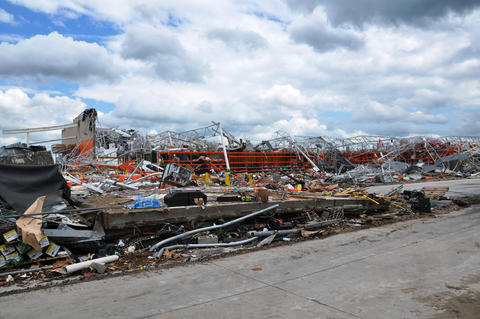NIST Awards $6.6 Million for Research to Help Structures Better Withstand Earthquakes, Wind and Fire

GAITHERSBURG, Md. — The U.S. Department of Commerce’s National Institute of Standards and Technology (NIST) is awarding more than $6.6 million to fund research into improving disaster resilience. Eleven organizations will receive 12 grants to conduct research into how earthquakes, wind and fire affect the built environment to inform building designs, codes and standards to help those structures better withstand such hazards.
“Natural hazards represent a significant threat to the well-being of our communities. In 2018 alone, the U.S. experienced 14 separate billion-dollar events, with total losses exceeding $91 billion. And the monetary figure does not reflect the many lives lost and countless lives disrupted,” said Howard Harary, director of NIST’s Engineering Laboratory, which manages the Disaster Resilience Grant Research Program. “Each of these grants represents research that is a substantial step toward creating a more disaster resilient nation.”
The grant awards were announced today during the 2019 Disaster Resilience Symposium, hosted at NIST’s Gaithersburg, Maryland, campus. The research projects align with NIST’s own programs in disaster resilience and support development of science-based building codes.
The awardees are:
Florida Institute of Technology ($421,000)
For a project to develop a wireless sensor network system and lidar experiments to characterize wind profiles near the ground and strong wind loads on nonstructural components of buildings (such as architectural details or electrical systems).
The Georgia Tech Research Corporation on behalf of Georgia Tech ($699,000)
To conduct research and develop analysis methods for improved damage assessments following a disaster, accounting for data uncertainty, differences in structures and hazard characteristics, and the performance of “lifelines” such as power, water, communications and wastewater systems.
Jensen Hughes Inc. ($493,000)
To systematically measure and analyze how embers, called “firebrands” by fire researchers, transfer heat and ignite infrastructure. The goal is to develop a method to assess the ignition potential of building materials in the “wildland urban interface,” where development occurs next to wildlands.
The Research Foundation for SUNY on behalf of the University at Buffalo ($584,000)
For research into improving the seismic performance and resilience of unreinforced masonry buildings by developing a framework for the design of reliable and cost-effective retrofitting.
Texas Tech University
($667,000) To develop innovative methods for measuring and modeling short-term and long-term social and health effects of windstorms and their impact on the built environment.
($582,000) To deploy new 4D measurement and modeling techniques to advance understanding of windstorm characteristics and provide input and validation of numerical, experimental and empirical modeling efforts.
The University Corporation for Atmospheric Research ($359,000)
To advance understanding of the role and transport of embers in real outdoor environments to enable effective and appropriate mitigation and defensive measures against wildland urban interface fire hazards.
The University of Colorado ($366,000)
To develop a framework for assessing retrofit solutions for reinforced concrete buildings so that they could immediately be used after an earthquake, an outcome called “functional recovery.”
The University of Illinois ($498,000)
To close fundamental knowledge gaps through the development and use of sensors to measure pressure, wind and wind load (the force wind exerts on a structure) characteristics in thunderstorm, tornado and tornado-like environments.
The University of Maryland ($550,000)
To identify why certain materials and structural components are more likely to be ignited by embers and develop a model describing the degradation and ignition of various materials.
The University of Oklahoma ($738,000)
For the development of maps of damaging winds from integrated remote and on-site observations that provide high resolution in time and space.
The University of Texas at Austin ($691,000)
To create analytical tools to describe failures in reinforced concrete walls and study the effectiveness of a variety of retrofit schemes to limit damage from earthquakes.
NIST promotes U.S. innovation and industrial competitiveness by advancing measurement science, standards and technology in ways that enhance economic security and improve our quality of life. NIST is a nonregulatory agency of the U.S. Department of Commerce. To learn more about NIST, visit www.nist.gov.

